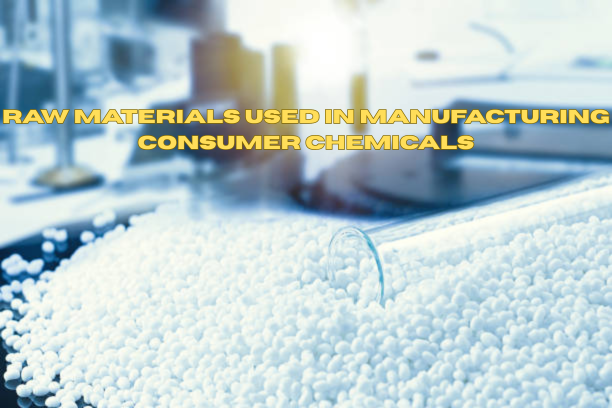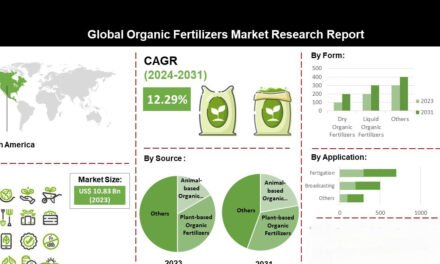The manufacturing of consumer chemicals involves a wide range of raw materials that provide the functional properties required for various applications like cleaning, personal care, and home maintenance. These raw materials can be categorized based on their roles in the formulations. Here’s an overview of the key raw materials used in manufacturing consumer chemicals:
1. Surfactants
- Function:
- Reduce surface tension to enhance cleaning, emulsifying, foaming, or wetting properties.
- Common Types:
- Anionic Surfactants:
- Sodium lauryl sulfate (SLS) and sodium laureth sulfate (SLES) in shampoos and detergents.
- Nonionic Surfactants:
- Alkyl polyglucosides and fatty alcohol ethoxylates in mild cleaners and personal care products.
- Cationic Surfactants:
- Quaternary ammonium compounds in fabric softeners and disinfectants.
- Amphoteric Surfactants:
- Cocamidopropyl betaine in gentle cleansers and baby products.
- Anionic Surfactants:
- Sources:
- Petroleum derivatives, natural oils, and fats.
2. Solvents
- Function:
- Dissolve or disperse ingredients, act as carriers, and influence drying time and texture.
- Common Solvents:
- Water (most common, as a universal solvent).
- Alcohols: Ethanol, isopropanol, and methanol in sanitizers and cleaning agents.
- Glycols: Propylene glycol and ethylene glycol in antifreeze and personal care products.
- Hydrocarbons: Mineral spirits and naphtha in paints and adhesives.
- Sources:
- Petroleum, natural gas, and renewable resources like corn and sugarcane.
3. Preservatives
- Function:
- Prevent microbial growth and extend product shelf life.
- Common Preservatives:
- Parabens: Widely used in cosmetics but increasingly replaced due to safety concerns.
- Phenoxyethanol: A safer alternative in personal care products.
- Formaldehyde Releasers: DMDM hydantoin and imidazolidinyl urea.
- Natural Preservatives: Grapefruit seed extract and essential oils.
- Sources:
- Synthetic chemistry and plant extracts.
4. Emollients and Moisturizers
- Function:
- Soften and hydrate the skin in personal care products.
- Common Emollients:
- Glycerin, shea butter, lanolin, and silicones (dimethicone).
- Natural oils like coconut oil, jojoba oil, and almond oil.
- Sources:
- Plant oils, animal-derived fats, and petrochemicals.
5. pH Adjusters
- Function:
- Regulate the acidity or alkalinity of formulations for stability and effectiveness.
- Common pH Adjusters:
- Acids: Citric acid, phosphoric acid, and lactic acid.
- Bases: Sodium hydroxide and potassium hydroxide.
- Buffers: Sodium bicarbonate and ammonium chloride.
- Sources:
- Mineral and organic chemical synthesis.
6. Fragrances and Essential Oils
- Function:
- Provide pleasant scents or masking odors.
- Common Ingredients:
- Synthetic fragrance compounds like limonene and linalool.
- Natural essential oils like lavender, eucalyptus, and orange oil.
- Sources:
- Plant distillation and petrochemical derivatives.
7. Thickeners and Rheology Modifiers
- Function:
- Control viscosity and texture, ensuring ease of application and stability.
- Common Thickeners:
- Polysaccharides: Xanthan gum, guar gum, and cellulose derivatives.
- Synthetic polymers: Carbomers and polyacrylamides.
- Clays: Bentonite and kaolin.
- Sources:
- Plant gums, synthetic production, and natural clays.
8. Antimicrobial Agents
- Function:
- Kill or inhibit the growth of bacteria, fungi, and viruses in cleaning and personal care products.
- Common Antimicrobials:
- Benzalkonium chloride, triclosan (limited use), and chlorhexidine.
- Natural alternatives like tea tree oil and silver nanoparticles.
- Sources:
- Synthetic chemistry and natural extracts.
9. Dyes and Pigments
- Function:
- Provide color for aesthetic or functional purposes.
- Common Types:
- Water-soluble dyes for personal care and cleaning products.
- Inorganic pigments like titanium dioxide for opacity and brightness.
- Sources:
- Synthetic production and mineral ores.
10. Active Ingredients
- Function:
- Deliver primary functionality, such as cleaning, disinfecting, or nourishing.
- Examples:
- Enzymes in detergents (e.g., proteases, lipases).
- UV filters in sunscreens (e.g., avobenzone, zinc oxide).
- Antioxidants in skincare (e.g., vitamin C, tocopherol).
- Sources:
- Biotech processes, petrochemicals, and natural sources.
11. Specialty Additives
- Function:
- Enhance performance, appearance, or stability.
- Examples:
- Anti-foaming agents in industrial cleaners.
- Stabilizers to prevent separation in emulsions.
- Anti-static agents in fabric softeners.
- Sources:
- Tailored chemical synthesis.
12. Renewable and Sustainable Alternatives
- Function:
- Replace petrochemical-derived ingredients to meet eco-friendly standards.
- Examples:
- Plant-based surfactants, biodegradable polymers, and bioethanol.
- Sources:
- Agricultural byproducts, algae, and waste valorization.
Conclusion
The specialty raw materials used in manufacturing consumer chemicals are carefully selected to deliver specific functionalities, ensure safety, and comply with regulatory standards. As consumer preferences shift toward eco-friendly and sustainable products, the industry is increasingly relying on renewable resources and green chemistry to innovate and meet these demands.
Hashtags
#RawMaterialsForChemicals #ConsumerChemicalIngredients #ChemicalRawMaterials #MaterialsForManufacturing #IndustrialInputs #Sustainability #GreenChemistry #EcoFriendlyIngredients #RenewableRawMaterials #CircularMaterials #Surfactants #SolventsAndDilutants #Emulsifiers #Preservatives #FragranceChemicals #RawMaterialTrends #GlobalChemicalSupply #MarketForChemicals #IndustrialMaterialInnovation #ChemicalIndustryTrends #RawMaterialRegulations #SustainableChemicalPolicy #ESGInChemicals

















